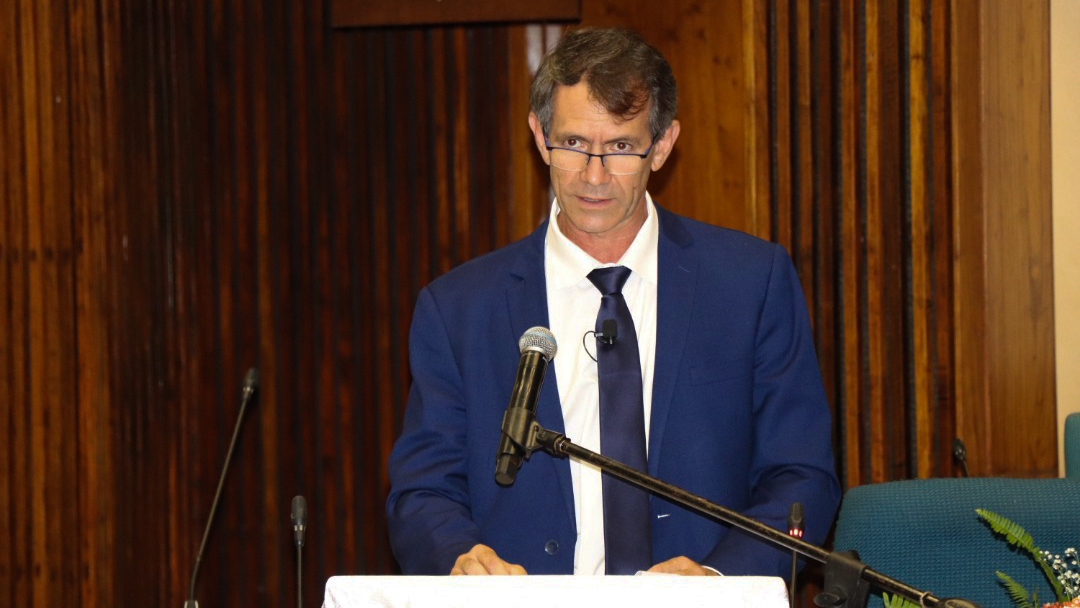
The Mid-Term Budget Statement, delivered by Minister for Finance, Neal Rijkenberg, presents a portrait of an economy at a crossroads. It was read with the optimism of a man navigating a storm.
It had all the essential elements for these updates, such as infrastructure projects, increased revenue collection by the taxman (up E700 million) and a projected economic growth rate that is higher than the country’s peers in the region.
However, he did admit a few worries; ranging from a public wage bill under strain, high commodity prices, declining volatile SACU receipts and a public debt that continues to rise. For the academic, the investor or the policy analyst, the statement is a useful collection of data and projections. However, for the common man and woman on the streets of Mbabane, Manzini and for the vast and growing legion of the unemployed, the document begs a single, deafening question: What does this mean for me?
This is the question on several calls one received after the minister’s statement yesterday, requesting that we try and break it down to the granular for them because they were not sure where their next meal would come from.
To put their plight in perspective, unemployment figures stood at 35.4 per cent, according to the integrated labour force survey of 2023, with youth unemployment hovering around 56 per cent. This is nearly half of our nation’s able-bodied workforce.
My callers were least concerned with the execution rate of capital expenditure or the volatility of SACU receipts. Their questions are a matter of daily survival: Where will we find jobs for our qualifications, when and just how many are there for the taking, exactly?
The minister rightly highlights that the recent salary reviews for public servants have put more money into the pockets of the employed. This, he said, should stimulate the economy as spending power increases. On the surface, this is a welcome development. However, high prices continue to erode this modest increase. He conceded that global pressures, from conflicts to regional food and energy costs, continue to fuel domestic inflation.
Every household struggles daily to put a meal on the table as food inflation stubbornly remains above target. The value of that little more in the pocket is diminished, not just for the public servant, but for the unemployed dependants they often support.
This brings us to the heart of government’s strategy: An infrastructure-led growth surge. It seeks to respond to His Majesty’s directive towards transforming the economy through private-sector-led growth. He also challenged the private sector to produce billionaires. This can be achieved in a vibrant economy.
Signs of growth are present, but so are frustrations among unpaid government suppliers, some of whom have had to shut their businesses and lay off staff. This has to be avoided at all costs.
The minister projects an impressive average growth rate of six per cent between 2025 and 2026, driven by a capital expenditure budget projected to peak at E8.2 billion.
However, the unemployed want specifics. “We hear of billions being spent, but we see few tangible hiring notices. We watch the earthmoving equipment roll in, but we cannot help but wonder if the skilled operators are from outside the country.”
This is not mere scepticism; it is a need for a clear picture between national investment and personal sustenance. They are asking a pertinent question: Just how much of this capital expenditure is recirculated within the Eswatini economy and how much is leaving our shores?
It goes without saying that the question arises from the increasing number of foreign contractors taking the bulk of the infrastructure projects and who are expected to take a substantial portion of the profits, the salaries of expatriate staff, the cost of imported materials, out of the country.
What sort of impact is this having on our domestic economic growth and, crucially, on our job creation potential? The best people to answer this are the unemployed. The minister correctly identifies a structural rigidity in the budget, where the ever-growing public sector wage bill, now at E4.5 billion for the half-year, risks stifling productive expenditure.
While paying our teachers, nurses and civil servants is essential, the system is becoming a closed loop, say economic experts, because the state taxes the formal sector to pay its own employees, but struggles to allocate capital to create the conditions for that formal sector to expand and hire the 35.4 per cent who remain outside of it.
The Mid-Term Budget Statement is a map of good intentions, but the unemployed populace are saying beyond a map, they need a destination that has a clear, unambiguous answer to their plight.
They argue that they are not asking for a handout, but for opportunities. They want to know that the roads being built will lead them to a workplace that requires their degrees and certificates. They want to know that the energy being generated will power a factory that bears their employee number.
They are awaiting the next, most crucial chapter, where the statistics finally translate into payslips. I believe answers to these questions are available and the decisions to turn these answers into a reality are there for the taking up at Hospital Hill where national interests should override personal interests at all times. This country has great potential, which, if given the attention it deserves, would become the land of opportunity for all that it ought to be.

Minister for Finance, Neal Rijkenberg, presents a portrait of an economy at a crossroads. (File pic)